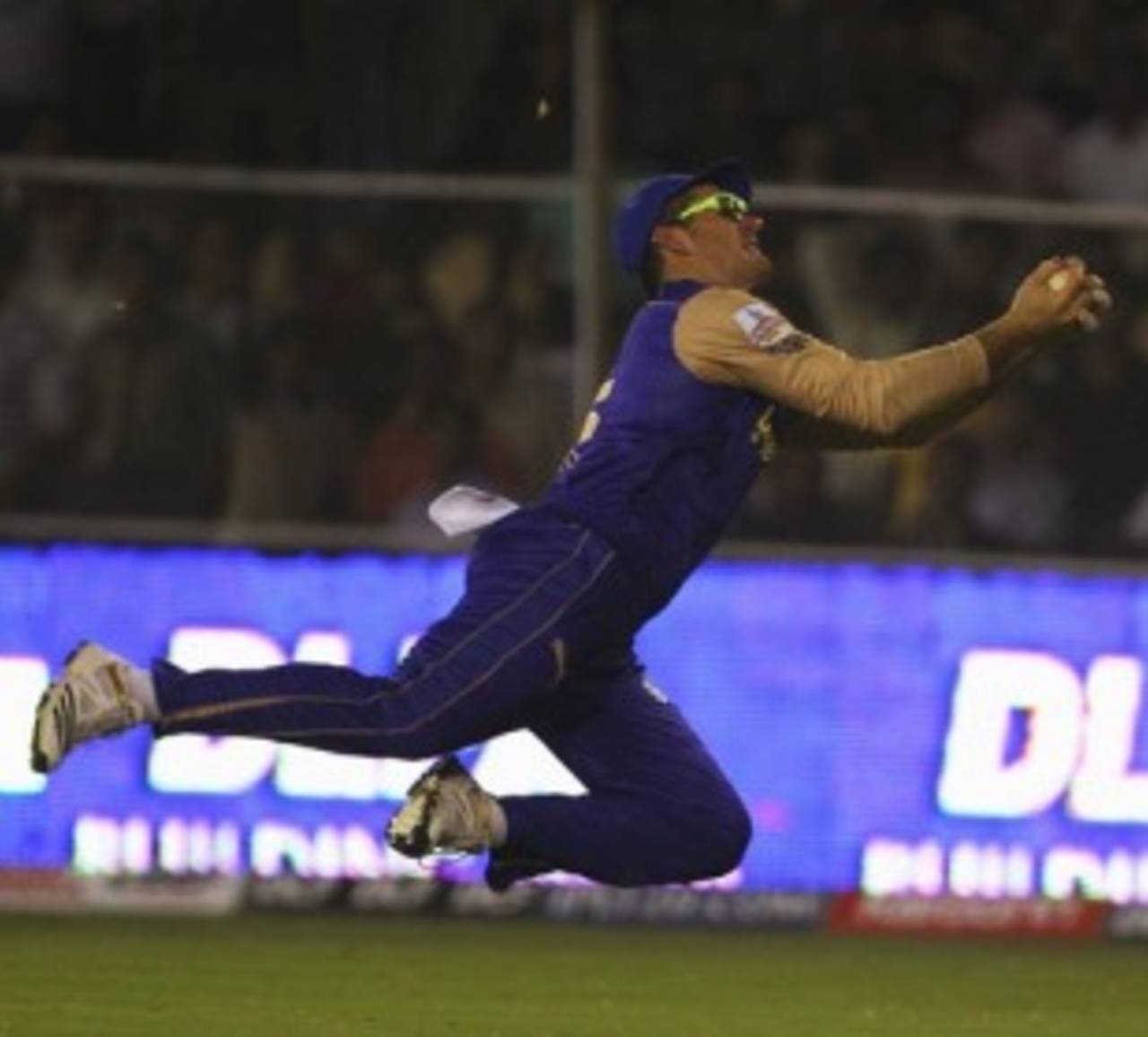The ICC World Twenty20, besides representing an opportunity for Graeme Smith to captain South Africa to their first major trophy in 12 years, is also a chance for Smith to complete his first limited-overs series in 2010. He has started three such series, including the World Twenty20, and pulled out of two with a problem that he can't seem to shake: lower arm and hand injuries.
In the last two years, Smith suffered six injuries of the arm, resulting in him missing either whole or part of six limited-overs competitions. His latest niggle was a double fracture to his right middle finger, sustained while taking a catch in the IPL. He had played just two matches when he was ruled out of the remainder of the tournament. Prior to that, he fractured his little finger in practice in India, forcing him out of the three-match one-day international series in February this year.
Smith was sidelined from both home and away ODI series against Australia in 2008-09 after Mitchell Johnson broke his hand twice. That came after he suffered from a tennis elbow condition, which he developed in April 2008. The injury recurred over the course of a year and kept him out of three ODIs against England in July 2008. With a record like that, one can't help but wonder: does Smith really detest playing limited-overs cricket so much, is he just horribly unlucky, or is there something wrong with his lower arms and hands?
One of the theories doing the rounds is that Smith's dalliance with cortisone may have made his bones brittle. Smith initially used cortisone injections as treatment for his tennis elbow, before finally agreeing to have surgery. Dr Jon Patricios, a sports scientist in Johannesburg, said excessive amounts of cortisone could have an adverse effect on bone strength, but only if it was administered in a certain way. "Usually if it is injected into the joints directly, and in copious amounts, it can weaken the bones. However, with Smith, the cortisone was injected into the tendon."
Although medical evidence suggests tendons could be weakened for up to three months as a result of direct cortisone treatment, and Patricios said he knew "a lot of people who felt Smith should not have had so many cortisone injections," he felt only negligible amounts of cortisone were absorbed into Smith's system. That, together with the speed at which Smith's latest injury healed (three weeks as opposed to the expected four to six weeks), led Patricios to believe that the captain's bones were strong and that it was "unlikely" that cortisone could have had any effect on him. In fact, the doctor said Smith was fortunate not to have had the injuries closer to joints because that would have been far more serious.
"Lucky, but unlucky," said Patricios, who thinks Smith just had wretched fortune when it came to his fingers and hands. He said Smith could consider using reinforcing materials in his gloves to lessen the blow, should he get hit again. South Africa's batting consultant, Kepler Wessels, said Smith would probably use more padded gloves but getting nailed was "part of the job."
Wessels said that on the occasions Smith was hit, it was by a "freak delivery". "No bowler can really plan on bowling a ball that takes off like that, so when it happens it's generally an accident. I can't see any coach telling their bowlers to plot how to break one of Smith's fingers or hands, since that isn't a line of attack. Opening batsmen accept that this is part of the game and that they are more vulnerable to it but it can't be seen as a weakness." Although a Ray Jennings-Andre Nel style bounty hunting (remember the deal over hitting Allan Donald on the head) is not likely to happen at international level, bowlers won't be blamed for smelling blood when they see Smith's hands gripped around his bat handle.
Wessels believed Smith had healed sufficiently to not have to worry about being seen as a soft target, and since his last two injuries were not even batting related, he didn't think the South African captain had reason to be concerned. He added if Smith felt any precaution was necessary, it would be better used in the field, where, "He may choose to stand in a place where the ball won't get hit a lot, but that's not an exact science, so the chance of him picking up another fielding injury can never be nullified completely. But he may do something like that if his finger is still feeling a little tender."
Smith may have fears of a seventh lower-arm injury buried somewhere deep in his burly frame, but Wessels said he wasn't over thinking the reasons for his recurring problem. "He is the kind of person who wants to score runs and lead the team to victory more than anything else, and if that means getting hurt, he'd be willing to get hurt. At the moment he has so much else on his mind that his injury risk probably doesn't feature too high." Things like the fact that South Africa's silverware cabinet is eerily barren and it's up to him, broken fingers or not, to try and change that.
Firdose Moonda is a freelance writer based in Johannesburg
